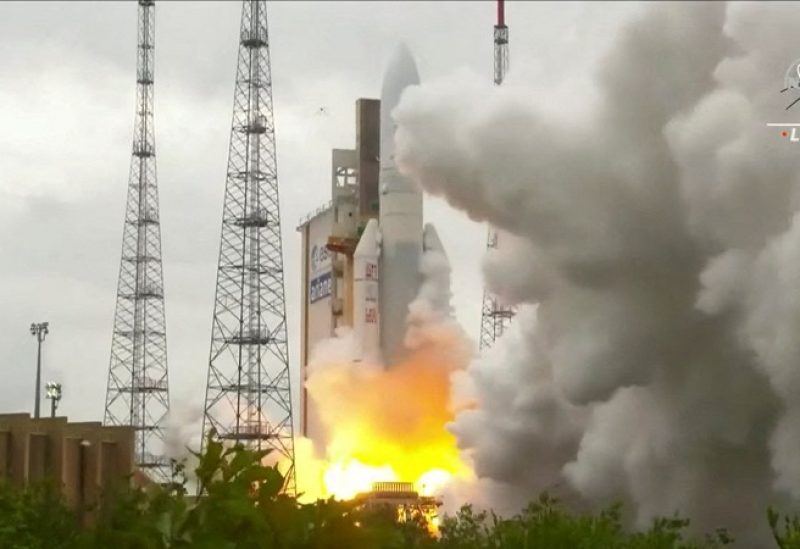
FILE PHOTO: Arianespace's Ariane 5 rocket, with NASA's James Webb Space Telescope onboard, launches from Europe's Spaceport, the Guiana Space Center in Kourou, French Guiana December 25, 2021 in a still image from video. NASA/NASA TV/Handout via REUTERS. MANDATORY CREDIT. THIS IMAGE HAS BEEN SUPPLIED BY A THIRD PARTY./File Photo
On Wednesday, Ariane-5, Europe’s heavy-lift rocket, embarked on its final mission. Having facilitated Europe’s access to space for nearly three decades, the rocket concluded its illustrious career by successfully launching two telecommunications satellites into space.
Ariane-5 was regarded as a highly successful launcher after it faced only two outright failures in 117 outings.
However, the retirement of Ariane 5 has left Europe in a difficult position, as it has no replacement prepared to take over.
The Ariane-6, which is the next-generation rocket, is still in its development and testing phase and is less likely to debut till next year.
To make matters more difficult, Russian Soyuz rockets can no longer be used by Europe and its smaller vehicle the Vega-C has been benched after it faced an in-flight failure last December.
Instead, the satellites of Europe have been forced to use the services of the United States. Euclid space telescope, which is worth €1.4 billion ($1.52 billion), was lofted last Saturday on a SpaceX Falcon-9 in Florida.
Europe’s launcher crisis
The home-grown rockets’ unavailability prompted European Space Agency director general Josef Aschbacher to recently announce that “Europe finds itself… in an acute launcher crisis”.
The final mission of Wednesday was conducted, as usual, from the Kourou spaceport located in French Guiana.
The two “passengers” onboard the rocket were a German demonstration spacecraft, called Heinrich Hertz and a French defence satellite, named Syracuse 4B.
Right after the start of the rocket’s launch window, the Ariane blasted at 19:00 local time (22:00 GMT; 23:00 BST).
Dr Aschbacher stated that scientists will remember the Ariane-5 as a remarkable vehicle.
“The performance and the accuracy of the Ariane-5 have been quite unique, but I’m convinced that Ariane-6 will have the same performance and the same accuracy once it’s on the launch pad,” he said while speaking to BBC News.
On December 25, 2021, the famed accuracy was best demonstrated when the rocket launched the $10 billion James Webb Space Telescope.
The telescope’s injection into orbit was done so precisely that the observatory did not require it to use its own fuel for correcting its trajectory, which doubled a projected operational lifetime from 10 to 20 years.
A new heavy-lift rocket from Europe was commissioned as the cost of production of the Ariane-5 appeared unsustainable in the wake of US competition.
The launch was upended by Elon Musk’s SpaceX company with his reusable Falcons, undercutting the price point of Ariane.